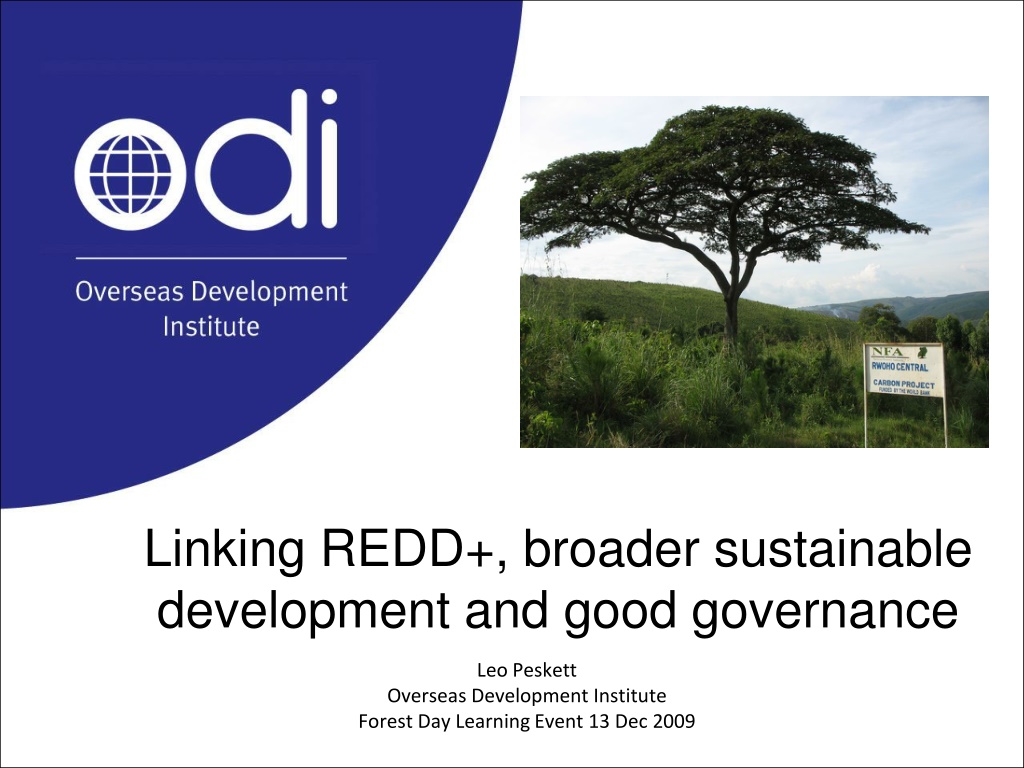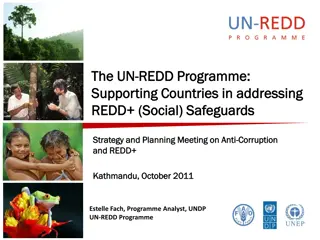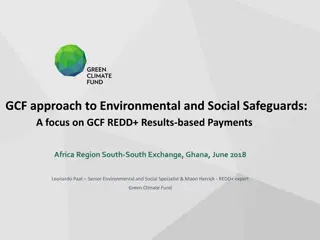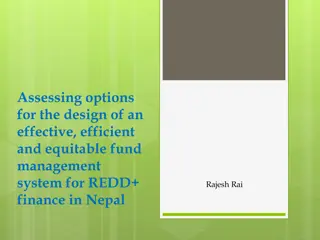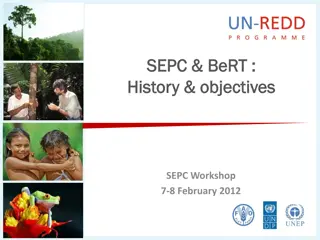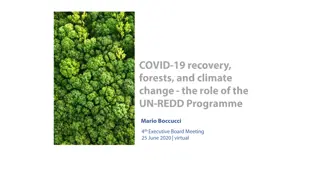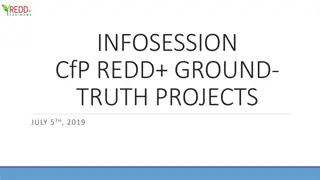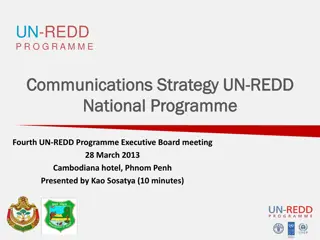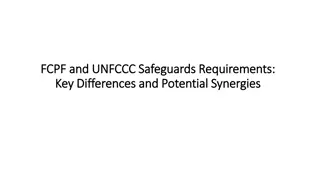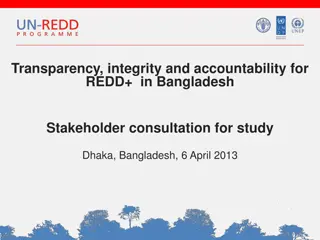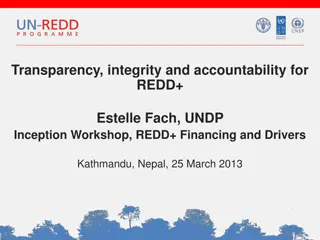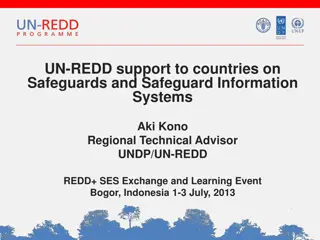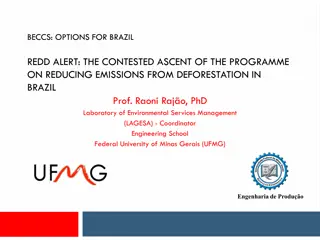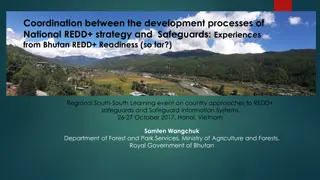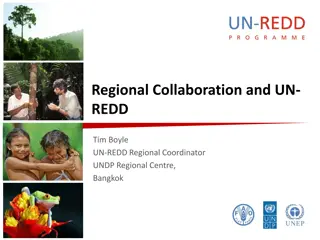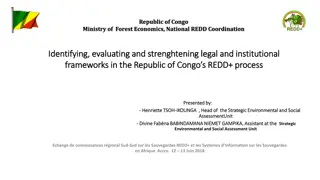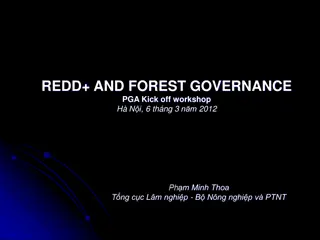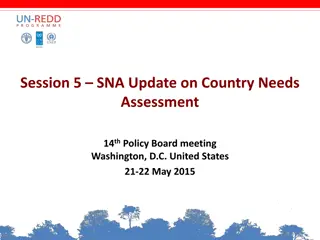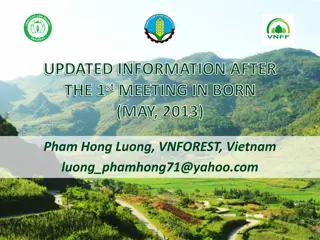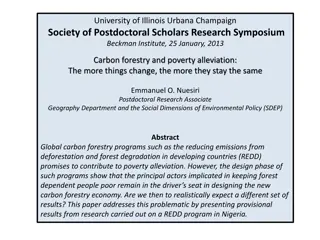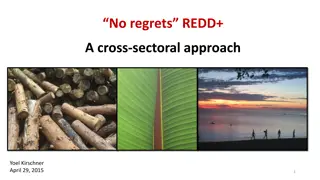Linking REDD+ with Sustainable Development Challenges and Realities
This content delves into the linkage between REDD+ initiatives and broader sustainable development, focusing on challenges and policy approaches at national and local levels. Insights on international and national connections to local livelihoods, along with institutional realities from multiple countries, are explored. Additionally, the narrative discusses the importance of national guidelines and standards in the context of REDD+ implementation, addressing procedural challenges and enforceability considerations.
Download Presentation

Please find below an Image/Link to download the presentation.
The content on the website is provided AS IS for your information and personal use only. It may not be sold, licensed, or shared on other websites without obtaining consent from the author. Download presentation by click this link. If you encounter any issues during the download, it is possible that the publisher has removed the file from their server.
E N D
Presentation Transcript
Linking REDD+, broader sustainable development and good governance Leo Peskett Overseas Development Institute Forest Day Learning Event 13 Dec 2009
Overview Focus on national level Brief insights on the reality of the challenges of linking REDD+ with broader sustainable development and governance Policy approaches for enhancing linking and their challenges
How are international and national REDD+ linked to local livelihoods? International buyers/funders $ and carbon National governments?? 3. Induced effects Changes in exchange rates and exports REDD sector Human resources developm ent Government spending Poor households in REDD projects Non-poor households Induced effects Poor households outside REDD projects Changes in prices and wages Non- REDD sector Infrastructure and transport Diversification SME Natural Assets development
REDD+ realities: the challenges Realities from eight countries Institutions and links to ongoing processes New institutions (steering committees, national working groups and councils for climate change) and fast pace of change Standardised planning processes Levels of harmonisation with national development strategies Parallel project and national approaches Coordination and commitment Degree of high level commitment Differences across government (and levels of government) State vs. non-state actors (NGOs; donors; private sector) Ownership of REDD+ processes Long term vision Benefit sharing and participation Government vs. non-government structures Level of understanding of benefits (and costs) and sharing Emphasis on forests and PES Representativeness of participatory processes Implementation barriers: politics of land; workable criteria; regulations being followed; investment risks Source: Peskett and Brockhaus 2009; REDD-net 2009
National guidelines and standards National (procedural) guidelines and standards: Establishing public consultation procedures at national level; Strengthening local organisations and groups that represent the interests of IPs and LCs; Training staff in local regulatory and funding agencies; Developing social impact assessments and involving IPs and LCs in assessments. Civil society advisory boards Challenges: Primarily procedural May not be feasible at international level Level of enforceability (mandatory or voluntary?)
Design of benefit sharing systems Recognition of rights and benefits in national legislation: Recognition of ecosystem service rights in national legislation. (e.g., Costa Rica) Specifying benefit types in national legislation, e.g., revenue sharing rules (e.g., as in Indonesian regulations), subsidies or tax credits, local development projects, loans, Criteria for prioritising smaller landowners (e.g., CR <300Ha but >2Ha); exemption of indigenous territories from complying with land ownership regulations (e.g. CR); Participation in monitoring, reporting and verification systems Transparency Revenue transparency mechanisms , e.g., through (1) citizen and parliamentary oversight, (2) clear guidelines on expenditure, and (3) public disclosure of external audits Enforcement and dispute resolution Strengthening regulatory structures (e.g., env and social impact assessment) Support for intermediaries/collective action (e.g., bundling) (e.g., World Bank Safeguards) Challenges: Perverse effects of participatory approaches (e.g., strengthened enforcement) Targeting the poorer community members Viability of alternative livelihood strategies Lack of data
Mainstreaming REDD+ Aligning with other development strategies (Bass 2009): Entry points in policy cycles (esp. concerning safeguards, prioritization and investment choices) Drivers with resources and vision to act (e.g., finance and planning ministries where these are concerned about critical prioritisation questions of budget and policy) Continuous improvement approach Linking to other key sectors (e.g., agriculture and minerals) Challenges: Political commitment towards REDD+ Overcoming potentially competing more mainstream development strategies Ensuring that development strategies are pro-poor Breadth of vision Time horizons
Recommendations Get the balance right: time horizons; breadth of REDD+; what is funded; links to performance Make sure tools are used: Existing experience; core principles
Thank you Leo Peskett l.peskett@odi.org.uk www.odi.org.uk/ccef www.redd-net.org
